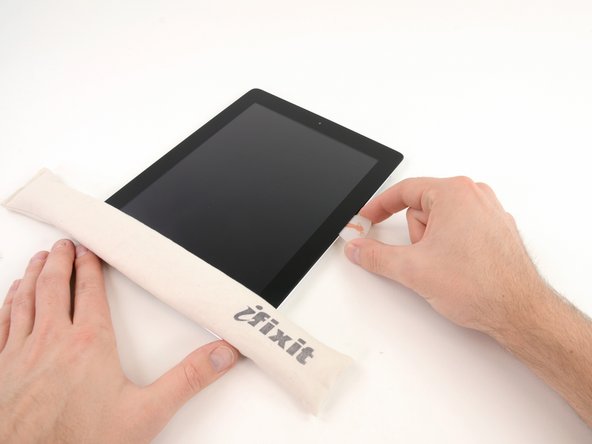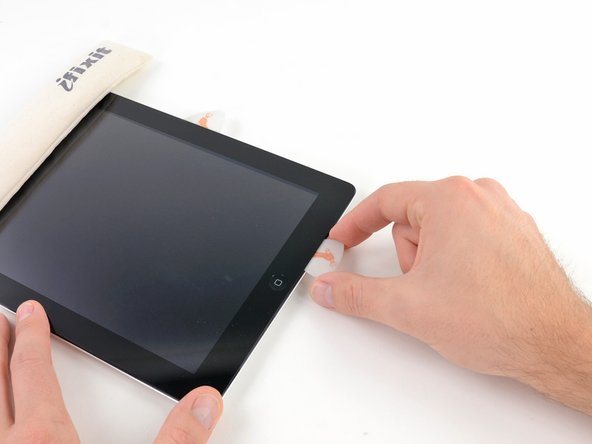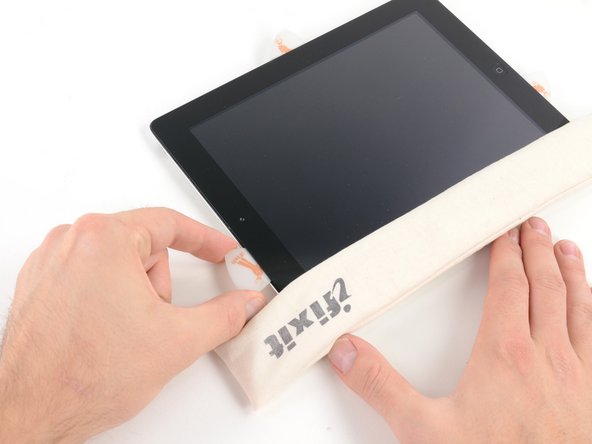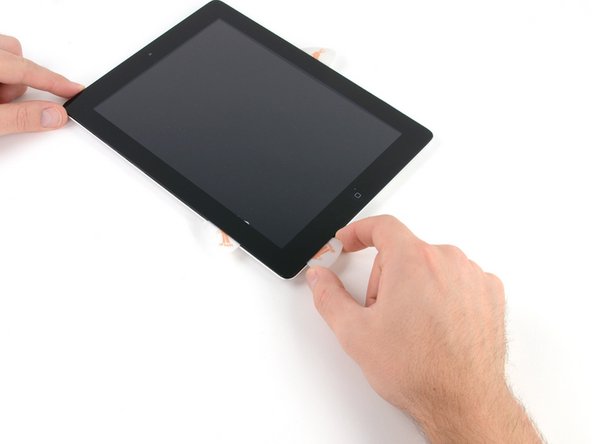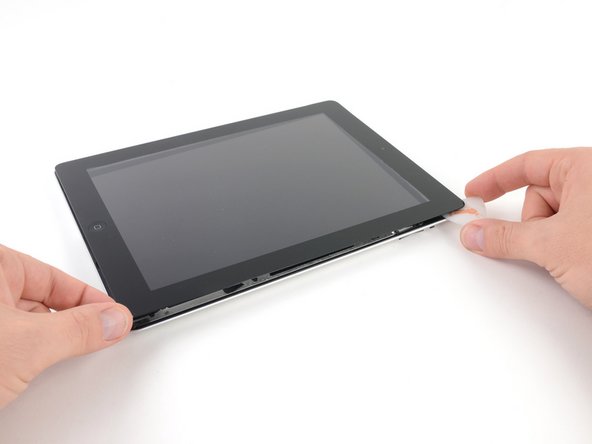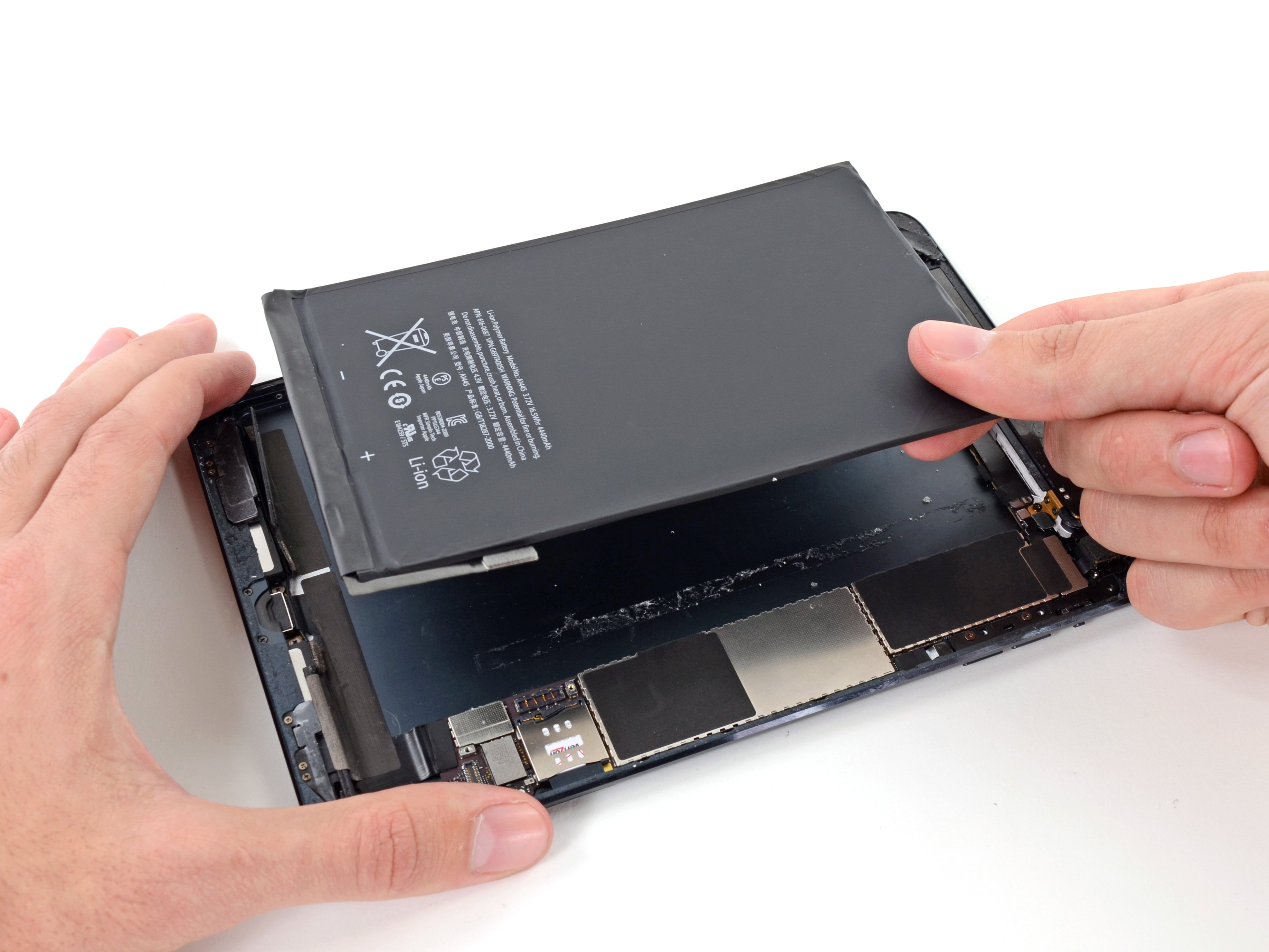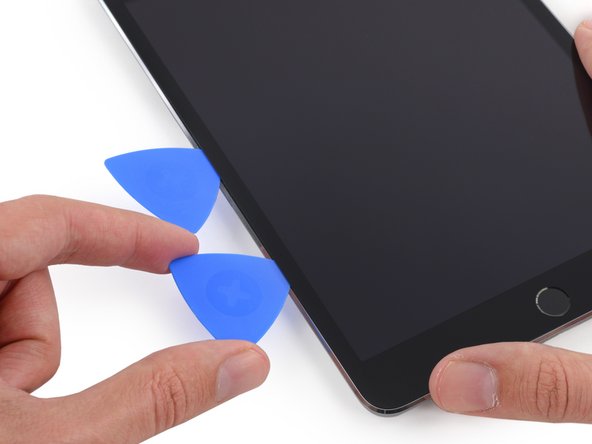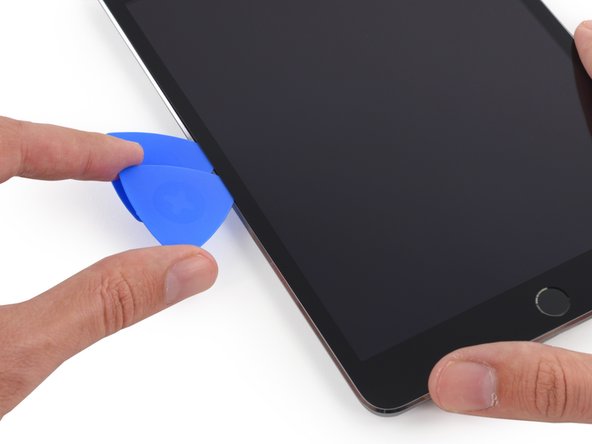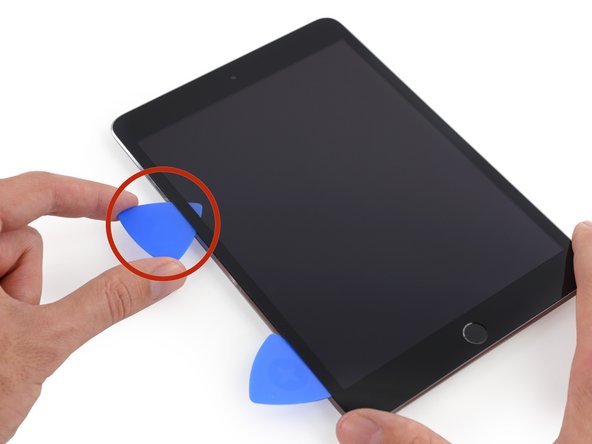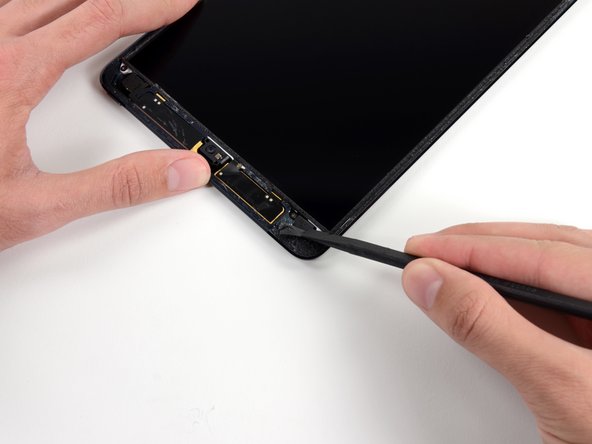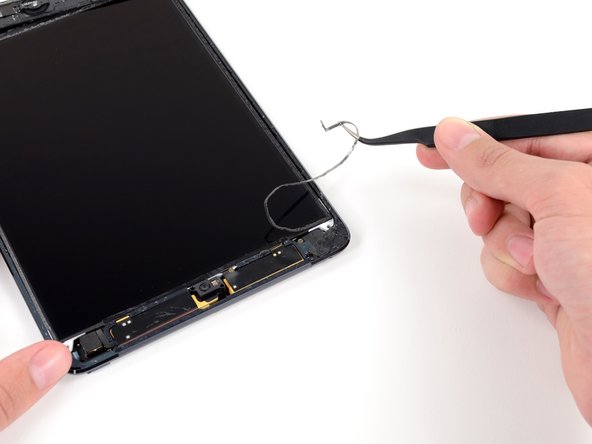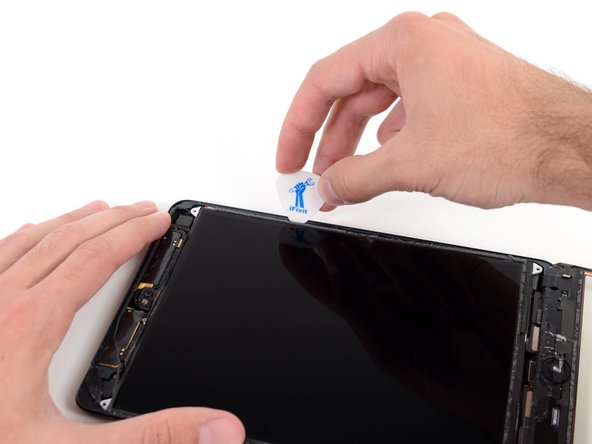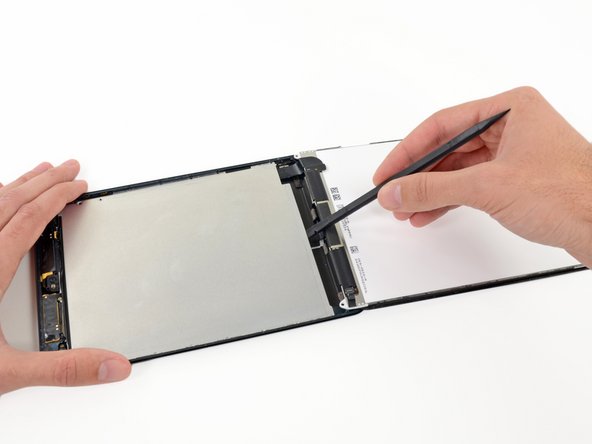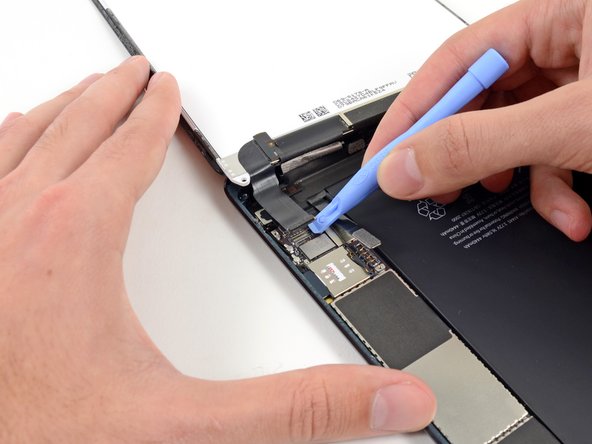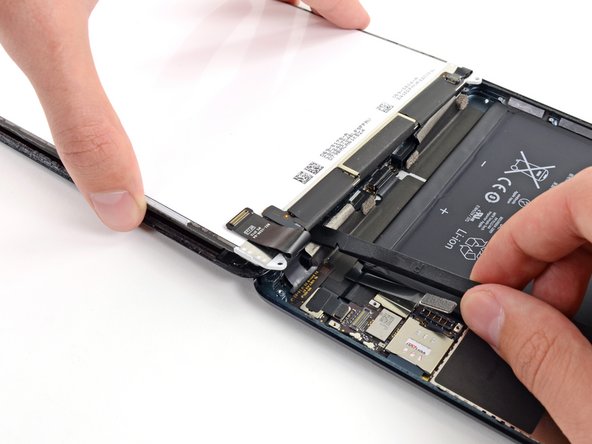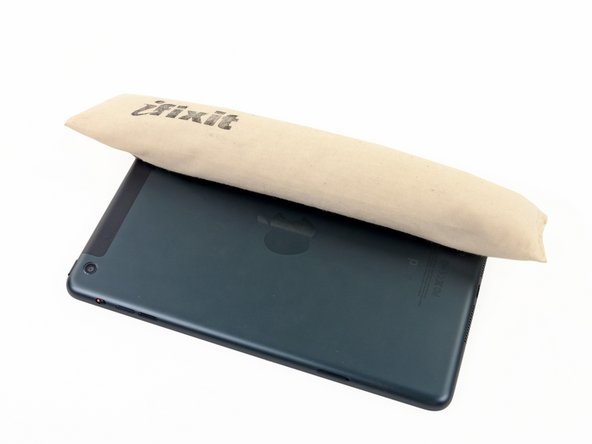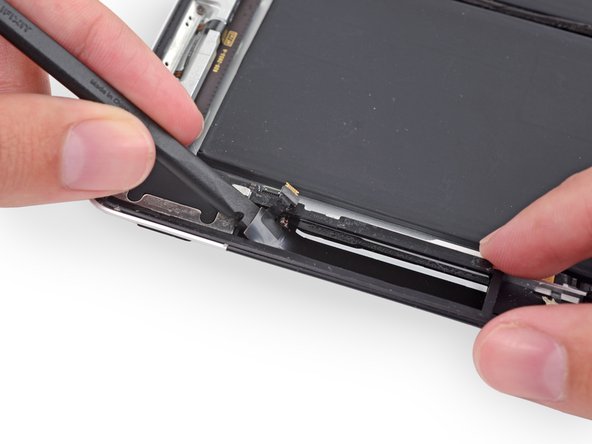Duration: 45 minutes
Steps: 32 Steps
Follow this guide to swap out a busted rear camera. Some parts were filmed using the Wi-Fi model, so the inside might look a bit different from the cellular version. Don’t worry—the steps work the same for both models unless we say otherwise.
Step 1
For carousel microwaves: Ensure that the plate can spin around without any hiccups. If your iOpener gets too cozy and stuck, it might just overheat and cause some trouble!
Before you dive into the repair, give that microwave a quick clean. Trust us, you don’t want any old food bits sticking to your iOpener. A little cleanup goes a long way!
– Pop the iOpener right in the middle of the microwave and let it heat up!
Tools Used
Step 2
Keep an eye on the iOpener’s temperature—overheating it can cause it to pop like a balloon! Never heat it beyond 100˚C (212˚F).
If the iOpener looks puffy or swollen, don’t touch it—better safe than sorry!
If the center of the iOpener is still too toasty to handle, keep using it while it cools down a bit before reheating. When heated just right, it stays warm for about 10 minutes.
Depending on your microwave’s wattage, you might need to adjust the heating time. The iOpener is good to go when it’s just a tad too hot to handle.
– Warm up the iOpener in the microwave for about thirty seconds.
– As the iOpener cools down during your repair, just pop it back in the microwave for another thirty seconds to keep the heat going.
Tools Used
Step 3
Careful now! The iOpener’s going to be sizzling hot, so handle it with care. Don’t forget to grab an oven mitt if you need one!
– Carefully take the iOpener out of the microwave, gripping one of the flat ends to steer clear of that toasty center. Safety first, and let’s keep those fingers happy!
Tools Used
Step 4
The iOpener gets pretty hot, so be sure to grab it only by the ends. Safety first, and let’s keep those fingers cool!
No microwave? No problem! Just heat your iOpener by dunking it in some boiling water instead.
– Grab a pot or pan and fill it with enough water to give your iOpener a nice, cozy bath.
– Turn up the heat and bring that water to a boil. Once it’s bubbling, go ahead and turn off the heat.
– Gently lower the iOpener into the hot water and let it soak for 2-3 minutes. Make sure it’s fully immersed and getting all the warmth it can handle.
– Using some tongs (safety first!), carefully take the heated iOpener out of the water.
– Give the iOpener a good dry with a towel, so it’s ready for action.
– And just like that, your iOpener is all set to go! If it needs a little more heat later, just repeat the boiling process for another 2-3 minutes.
Tools Used
Step 5
Put on those stylish safety glasses to keep your peepers safe, and watch out for that delicate LCD screen—it’s easier to crack than you think!
This helps keep the glass shards in check and gives the screen some extra toughness when you’re prying and lifting it up.
– If your display glass is sporting a crack, let’s keep things safe and sound! Grab some tape to keep any further shattering at bay and protect yourself while you work your magic.
– Lay down some overlapping strips of clear packing tape across your iPad’s display until you’ve got the entire front covered. It’s like giving your device a cozy blanket!
– Now, just follow the rest of this guide as best as you can. But here’s the deal: once that glass is broken, it might want to keep cracking as you go. You might need to get a little creative with a metal prying tool to help scoop out those glass pieces. And remember, if it gets too tricky, don’t hesitate to schedule a repair!
Step 6
Just a heads up—while you’re diving into this repair, you might encounter some pesky broken glass. To keep those peepers safe from any flying shards, we highly recommend rocking a pair of safety glasses. Better safe than sorry, right?
– Place the iOpener flat against the right edge of your iPad, making sure it’s nice and snug against the surface. We want that contact to be just right!
– Give it a little time to work its magic—let the bag rest on the iPad for about 90 seconds before you dive in and start opening up the front panel.
Tools Used
Step 7
Getting the wedged tip of the opening tool between the glass and plastic might take a bit of elbow grease. Stay cool and patient, gently wiggle that plastic tool back and forth until it slips in nicely.
– Check out the tiny gap in the iPad’s adhesive ring located in the upper right corner, about 2.0 inches (~5 cm) down from the top edge. This little spot is your entry point.
– Line up your tool with the mute button. Gently slip the tip of a plastic opening tool into the crack between the front glass and plastic bezel—just the tip, just enough to nudge the gap open a bit.
Step 8
– Carefully slide your tool in right where the plastic display bezel meets the front glass panel—this is the sweet spot!
Step 9
– Keep the tip of your plastic opening tool snug between the front glass and plastic bezel, then slide a plastic opening pick right into the gap next to it. Easy does it!
Step 10
– Gently slide the plastic opening tool out from the iPad, then carefully nudge the opening pick a bit deeper under the front glass—about half an inch should do the trick.
Step 11
– As you tackle the adhesive on the right side of the iPad, give the iOpener a little extra heat and pop it back onto the bottom edge of the iPad.
Tools Used
Step 12
The adhesive is super strong, so you might need to channel your inner superhero here. Take it slow and steady!
If you spot the tip of the opening pick peeking out from under the front glass, gently pull it back just a bit. Going this deep with the pick won’t cause any damage, but it might leave some adhesive smudges on the LCD.
– While the bottom edge is getting a little warmth from the iOpener, start peeling back the adhesive from the right side of your iPad.
– Take the opening pick and gently slide it down along the edge of your iPad, releasing that stubborn adhesive as you go. Smooth and steady!
Tools Used
Step 13
You might find it helpful to slide the heated iOpener back over to the right edge of the iPad as you peel away the adhesive. Just keep in mind that this will depend on how long the iPad has been chilling while you’ve been working your magic.
– If your opening pick gets stuck in the adhesive, try gently ‘rolling’ it along the edge of the iPad to keep loosening that stubborn glue.
Tools Used
Step 14
– Before pulling out that first opening pick from the bottom corner of your iPad, slide a second pick under the right edge of the front glass to stop the adhesive from sticking back together.
– Warm up the iOpener again, then shift it over to the top edge of the iPad.
Tools Used
Step 15
The Wi-Fi antenna is snugged into the bottom right corner of the iPad’s rear case with screws and a cable. Since it’s positioned just so, take your time and handle it gently—one wrong move could mean saying goodbye to your Wi-Fi antenna forever.
– Alright, my friend, it’s time to tread carefully! We’re about to release the adhesive that’s keeping the antenna snug against the front panel. Just remember, we want to be gentle so we don’t accidentally harm any of the delicate bits that connect the antenna to the bottom of your iPad. So, let’s take a deep breath and follow these next steps with care!
Step 16
Hey there! Just a friendly reminder: don’t slide that pick past the bottom right corner, okay? You wouldn’t want to accidentally mess with the Wi-Fi antenna. Keep it safe and sound!
– Gently glide the opening pick around the bottom right corner of your iPad, freeing up that pesky adhesive along the way.
Step 17
As you glide the opening pick along the bottom right edge of the front panel, keep in mind that the Wi-Fi antenna is sneaky and sits just around the corner. If you accidentally let the adhesive loose in the wrong way, it might just decide to take a vacation! So, let’s be careful and keep everything intact.
Keep the pick tucked just a smidge under the front glass—about 1/8″ (3 mm) of the tip should stay put while you gently pull it out. No full escapes allowed!
– Gently glide the tip of your opening pick along the bottom edge of the iPad to free up that sticky adhesive holding tight to the Wi-Fi antenna. You’ve got this!
Step 18
– After you pass the Wi-Fi antenna (about 3″ (75 mm) from the right edge, right next to the home button), slide the opening pick all the way in.
– Gently slide the pick to the right to loosen the adhesive holding the Wi-Fi antenna to the front glass.
– Keep in mind, the antenna is screwed and connected by a cable to the bottom of the iPad. This step separates the antenna from the front panel so it stays safe when you pull the panel off.
Step 19
Keep your iOpener heating sessions under a minute, then give it a solid two-minute chill time before firing it up again.
If the adhesive has cooled down too much along the bottom edge, give your iOpener a little reheat love to warm things up where you’re working.
– Keep on peeling away that sticky adhesive at the bottom of the iPad! Gently pull the opening pick out far enough to glide around the home button, and then slide it back in to about a half-inch (10 mm) deep once you’ve passed the home button. You’re doing great!
Tools Used
Step 20
On iPad 4 models, carefully insert the pick up to 1/2 inch (10 mm) in this spot. We want to be cautious here to avoid messing with the delicate home button ribbon cable!
– Keep peeling the adhesive all along the bottom edge of the iPad like a pro.
– Leave that opening pick chilling under the front glass near the home button to keep things ready.
Step 21
– Pop that iOpener into the microwave and warm it up. Once it’s good to go, place it on the left edge of the iPad to start loosening up the adhesive in that section. Easy does it!
Tools Used
Step 22
If your adhesive has taken a bit of a chill, just swap out the iOpener along the top edge and keep on going. If the iOpener feels too cool, give it a little reheat to get back in the game.
– Gently slide the opening pick along the top edge of the iPad, easing it out a bit to navigate around the front-facing camera bracket.
– Heads up: the adhesive here is super stubborn, so you might need to apply some firm, steady pressure. Take it slow and steady to avoid any slips or scratches on you or your iPad.
– If the pick feels stuck in the adhesive, try “rolling” it as demonstrated in step 9 to help it glide through more smoothly.
Tools Used
Step 23
If the adhesive is toasty enough, feel free to take the iOpener off the iPad for a smoother ride. But if it’s still clinging on like a stubborn toddler, just give the iOpener another quick heat-up and pop it back on the left edge while you get to work.
– Keep peeling back the adhesive along the top edge of the iPad, then carefully slide your opening pick around the top left corner like a pro.
Tools Used
Step 24
Hey there! The digitizer cable is hanging out about 2 inches (50 mm) from the bottom of your iPad. So, when you’re sliding that pick, just stop when you’re about 2.25 inches (60 mm) from the bottom. You’ve got this!
– Gently slide your opening pick along the left edge of the iPad to loosen the adhesive. Heads up—the adhesive here is super thin because of the digitizer running the full left side. Keep that pick shallow, no deeper than about half an inch (10 mm), so you don’t accidentally mess with the digitizer.
Step 25
The digitizer cable is just a tiny 1 inch (25 mm) away from the iPad’s bottom. Take your time and be careful, so you don’t accidentally cut this cable. Slow and steady wins the race!
– With the opening pick still tucked under the bottom edge of your iPad, gently release the adhesive in the bottom left corner. Take it slow and steady—you’re almost there!
Step 26
If some of the adhesive around the edges of your iPad has reattached itself, no worries! Just grab a pick and carefully slide it under the edge where the front glass is still stuck. Gently work your way around to ‘cut’ through the adhesive and you’re golden!
– Grab one of your trusty opening picks and gently pry up the bottom right corner of the iPad, then slip your fingers in to get a good hold.
Step 27
Watch out for any sticky adhesive still hanging on, and gently slide an opening pick to slice through any glue keeping the front panel stuck.
– Grab the iPad by the top and bottom right corners and gently swivel the front glass away from the device.
– When putting it back together, grab a microfiber cloth and some compressed air to zap away any dust or fingerprints on the LCD before snapping the glass back on.
Step 28
– Unscrew those pesky four 2.0 mm Phillips screws that are holding the LCD snugly in place with the rear case.
Step 29
– Gently lift the LCD from the long side near the volume buttons and swing it out from the back case.
– Place the LCD face-up on the front panel just like you see in the second photo.
Step 30
– Gently peel away the rubber cover from the metal camera retainer and lift it off the iPad 2 with care.
Step 31
Make sure that the little thermal pad is snugly attached to the metal retaining clip, just like you see in the third picture while swapping out the rear camera. You’ve got this!
No need to stress if the camera comes out with the retaining clip! Just gently separate the camera from the clip before you reinstall it. This way, you’ll make sure the connector fits perfectly in its rightful place.
– First up, let’s tackle those screws! Remove these two little gems:
– Next, give that metal retainer clip a gentle lift straight up from its cozy spot in the rear panel.
– One 3.3 mm Phillips screw
– And don’t forget about that one 2.1 mm Phillips screw!
Step 32
– To put your device back together, just follow these steps in reverse order and check out our iPad 2 GSM Front Panel Adhesive strips guide to seal the front panel like a pro. If you hit a snag, no worries—you can always schedule a repair!
Success!
























